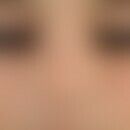Synonym(s)
DefinitionThis section has been translated automatically.
The current diagnosis of Acute Renal Failure is based on the 2012 KDIGO criteria (Kidney Disease: Improving Global Outcome") and is considered to be present if one of the following criteria is met:
Increase in serum creatinine by ≥0.3 mg/dL (26.5 μmol/L) within 48 hours
Increase in serum creatinine to ≥1.5-fold within the last 7 days
Newly occurred reduction of the urine quantity <0.5 mL/kgKG/h over 6 hours
ClassificationThis section has been translated automatically.
| Stadium | Serum Creatinine | Urinary excretion |
|---|---|---|
| 1 |
1.5 to 1.9 times increase (within 7 days) or Increase by 0.3 mg/dL (26.5 μmol/L) (within 48 hours) |
<0.5 mL/kgKG/h for 6-12 h |
| 2 | 2 to 2.9 times increase (within 7 days) |
<0.5 mL/kgKG/h for ≥12 h |
| 3 |
≥6-fold? increase (within 7 days) or Increase to ≥4 mg/dL (353.6 μmol/L) or Start of a renal replacement therapy or Patients <18 years: decrease of eGFR to <35 mL/min/1.73 m2 |
<0.3 mL/kgKG/h for ≥24 h or Anuria for ≥12 h |
You might also be interested in
EtiologyThis section has been translated automatically.
Prerenal acute renal failure (60%):
- Decreased perfusion is the cause of loss of function, e.g., due to hypovolemia or decreased circulating blood volume, for example, in the setting of shock, sepsis, or nephrotic syndrome. Prolonged prerenal genesis may additionally lead to intrarenal renal failure due to tubular necrosis.
Intrarenal acute renal failure (35%); the cause is O2 deficiency of the renal parenchyma due to reduced perfusion:
- tubular causes:
- Acute tubular necrosis (mainly) due to ischemia or drug toxicity.
- Pigment nephropathy for example due to hemolysis or rhabdomyolysis (crush syndrome)
- macrovascular causes:
- Renal vein thrombosis
- Renal artery stenosis
- Renal infarctions
- Arterial dissections
- microvascular/glomerular causes:
- Glomerulonephritides
- thrombotic microangiopathies (e.g. HUS, HELP syndrome)
- cholesterol embolism
- local bacterial infections
Postrenal acute renal failure (5%)
- an outflow obstruction is the cause of acute renal failure (acquired: e.g. renal pelvic stones, tumors or congenital: e.g. urethral strictures, bladder malformations)
ClinicThis section has been translated automatically.
The clinical picture of acute renal failure is non-specific. Asymptomatic courses are possible.
Possible leading finding: oligo- or anuria .
Three phases of acute renal failure are described (Herold 2019):
- Asymptomatic initial phase or symptoms of the underlying condition.
- Manifest renal failure phase characterized by increase in retention parameters.
- Diuretic/polyuric phase
DiagnosisThis section has been translated automatically.
Diagnosis based on the amount of urine excreted or the increase in creatinine.
Staging according to KDIGO
Determination of the cause by:
- anamnesis (loss of fluid, intake of nephrotoxic drugs...)
- physical examination (signs of hypervolemia, hypovolaemia)
- Laboratory (blood: creatinine, urea, electrolytes, blood count, BGA, CK, LDH, lipase, possibly BK, electrophoresis; urine: urine sediment, urine status, determination of fractional sodium excretion to differentiate between prerenal and intrarenal acute renal failure)
- Imaging mainly by sonography
- Renal biopsy to exclude a rapid progressive form
Complication(s)This section has been translated automatically.
- fluid lung, pleural effusions
- Anemia, Uremia
- upper gastrointestinal bleeding
- Cardiac arrhythmias, pericarditis
- encephalopathy, seizures
- Infections, sepsis
TherapyThis section has been translated automatically.
- Treatment of the underlying disease,
- Avoid nephrotoxic drugs
- Balanced volume output
- depending on the genesis: immunosupressive therapy, revascularization, removal of the obstruction
- renal replacement therapy if necessary
LiteratureThis section has been translated automatically.
- Gudsoorkar PS et al (2019) Acute Kidney Injury, Heart Failure, and Health Outcomes. Cardiol Clin 37:297-305.
- Zarbock A et al. (2014) New KDIGO guidelines on acute kidney injury. Practical recommendations.
Anaesthesiologist 63:578-88.




